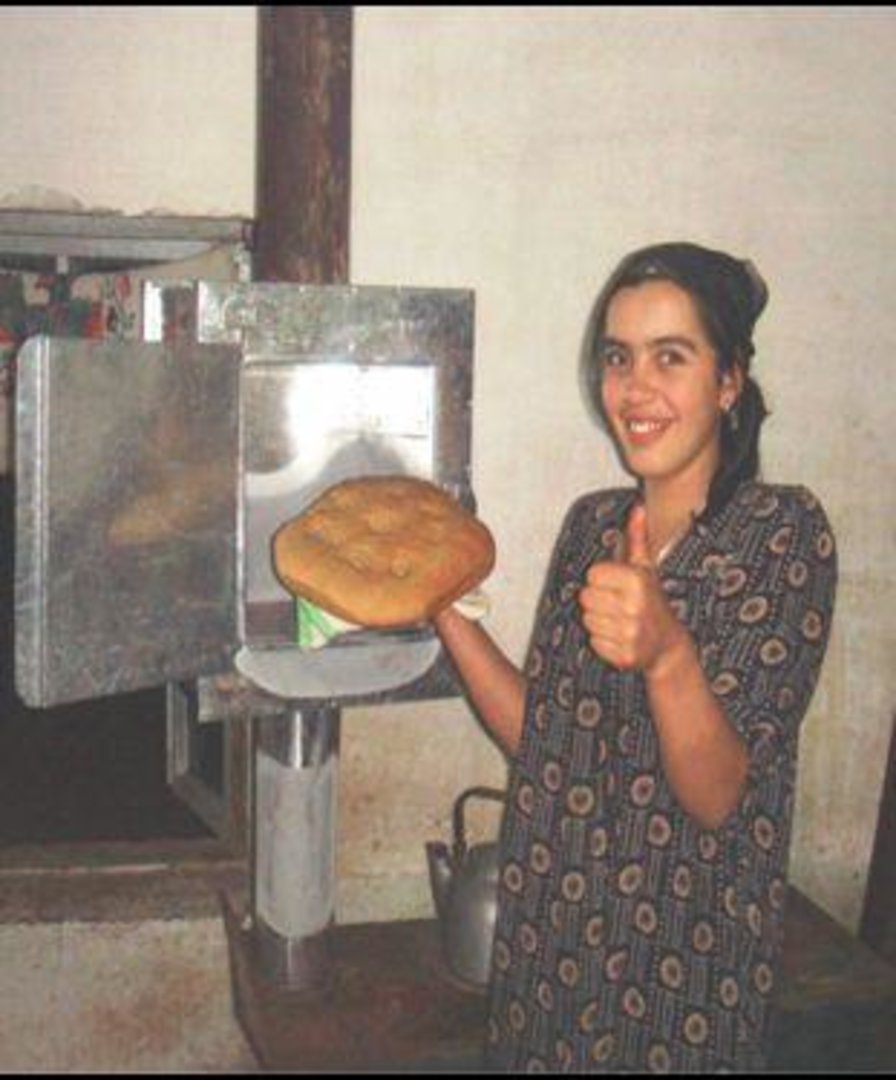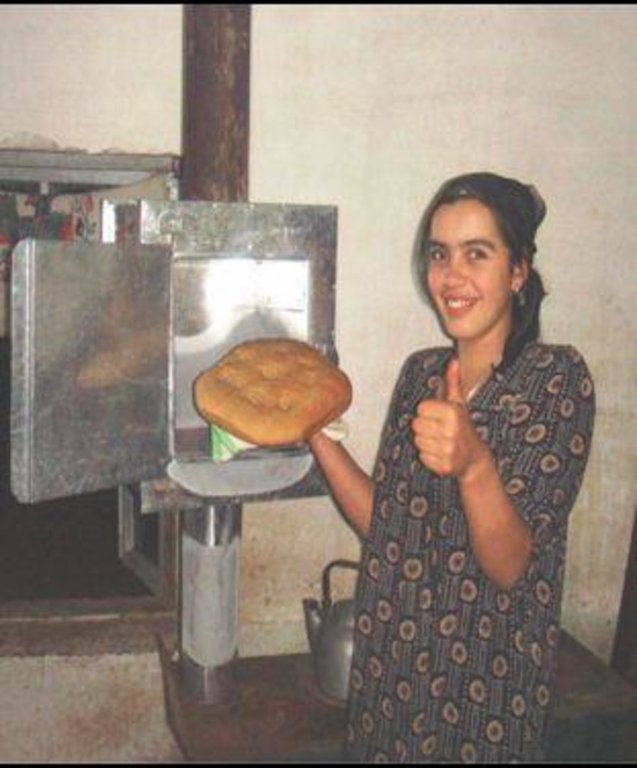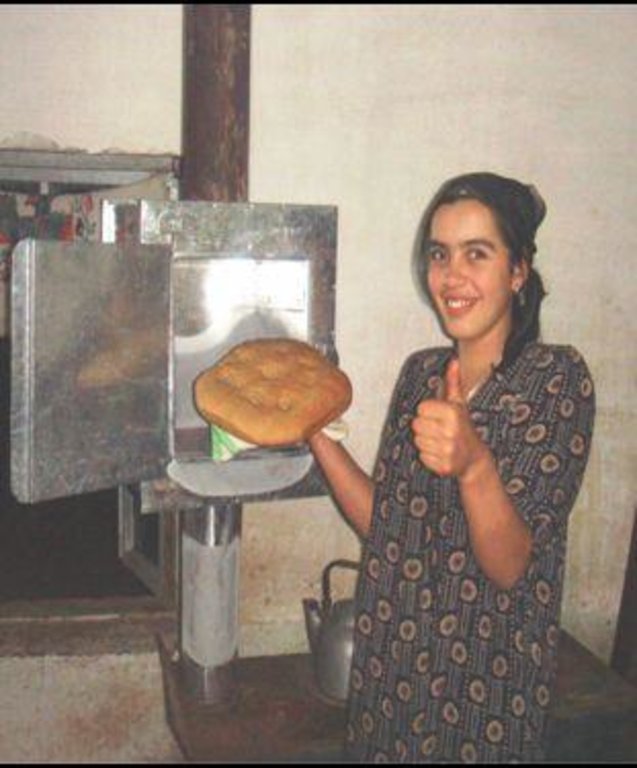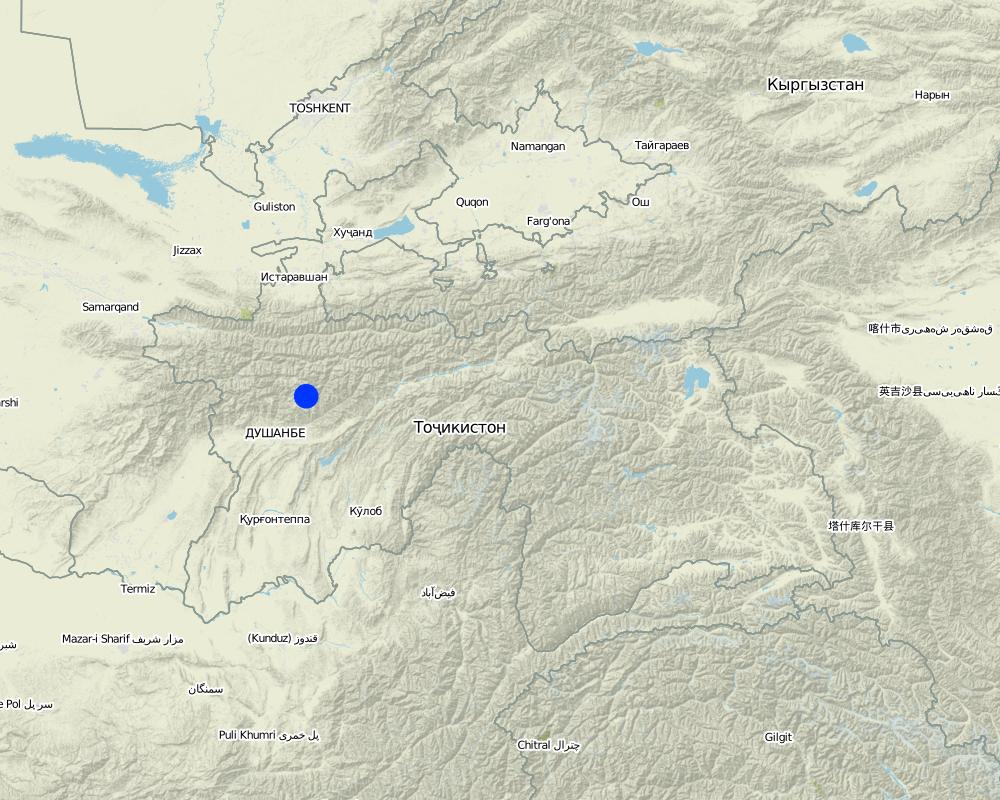Energy efficiency measures to increase the application of organic fertilisers. [ทาจิกิสถาน]
- ผู้สร้างสรรค์:
- การอัพเดท:
- ผู้รวบรวม: Daler Domullojonov
- ผู้เรียบเรียง: –
- ผู้ตรวจสอบ: Fabian Ottiger, Alexandra Gavilano, Laura Ebneter
Бехтар намудани хосилнокии замин ба воситаи амалигардонии чорахои самаранокии истифодабарии неру
technologies_1050 - ทาจิกิสถาน
- บทสรุปทั้งหมดในรูปแบบของ PDF
- บทสรุปทั้งหมดในรูปแบบของ PDF เพื่อพิมพ์
- บทสรุปทั้งหมดในรูปหน้าเว็บ
- บทสรุปทั้งหมด (ไม่มีการจัดเรียง)
- Energy efficiency measures to increase the application of organic fertilisers.: 2 พฤศจิกายน 2021 (public)
- Energy efficiency measures to increase the application of organic fertilisers.: 14 สิงหาคม 2019 (inactive)
- Energy efficiency measures to increase the application of organic fertilisers.: 21 กรกฎาคม 2017 (inactive)
- Energy efficiency measures to increase the application of organic fertilisers.: 2 มิถุนายน 2017 (inactive)
- Energy efficiency measures to increase the application of organic fertilisers.: 31 พฤษภาคม 2017 (inactive)
- Energy efficiency measures to increase the application of organic fertilisers.: 27 ธันวาคม 2016 (inactive)
ดูส่วนย่อย
ขยายทั้งหมด ย่อทั้งหมด1. ข้อมูลทั่วไป
1.2 รายละเอียดที่ติดต่อได้ของผู้รวบรวมและองค์กรที่เกี่ยวข้องในการประเมินและการจัดเตรียมทำเอกสารของเทคโนโลยี
วิทยากรหลัก
ผู้เชี่ยวชาญ SLM:
Hafizova Tahmina
Welthungerhilfe
เยอรมนี
ผู้เชี่ยวชาญ SLM:
Olimov Nazarmad
Welthungerhilfe
เยอรมนี
ชื่อขององค์กรซึ่งอำนวยความสะดวกในการทำเอกสารหรือการประเมินเทคโนโลยี (ถ้าเกี่ยวข้อง)
Deutsche Welthungerhilfe e. V. (Welthungerhilfe) - ทาจิกิสถาน1.3 เงื่อนไขการใช้ข้อมูลที่ได้บันทึกผ่านทาง WOCAT
วันที่เก็บรวบรวมข้อมูล(ภาคสนาม) :
30/04/2011
ผู้รวบรวมและวิทยากรหลักยอมรับเงื่อนไขเกี่ยวกับการใช้ข้อมูลที่ถูกบันทึกผ่านทาง WOCAT:
ใช่
2. การอธิบายลักษณะของเทคโนโลยี SLM
2.1 การอธิบายแบบสั้น ๆ ของเทคโนโลยี
คำจำกัดความของเทคโนโลยี:
The implementation of several low cost energy efficiency measures to reduce the amount of organic material used as fuel within rural households.
2.2 การอธิบายแบบละเอียดของเทคโนโลยี
คำอธิบาย:
In many cases local inhabitants of rural areas depend heavily on locally available natural resources, contributing to, and accelerating deforestation. As a low cost fuel source, local households often use cow-dung and wood. Taking these from the local area contributes to decreased soil fertility and erosion processes. Most of the dung collected from livestock is burnt in a very inefficient manner for cooking, baking and heating purposes. Based upon assessments by Welthungerhilfe in 600 households (HH) who were using cow dung as the only fuel material, on average one HH uses 4.6 tons of cow dung annually when using traditional cooking stoves, 6 tons for heating and 4.5 tons for bread baking. This means almost 15.1 tons of cow dung is burnt annually per HH.
Using a simple modification of the traditional cooking stove, approximately 50 - 60% or 2.3 tons of fuel material can be saved. This saving can be further increased by the utilisation of a pressure cooker that decreases the cooking time by 50%. Not all local hot meals can be cooked with a pressure cooker but it can contribute to an additional saving of 0.7 ton of organic matter.
The introduction of a metal heat exchanger on the exhaust pipe of a cast iron stove can help save a household 3 tons of fuel material per year, the effectiveness can be further increased by the incorporation of bread baking compartment.
Further savings can be made by using straw, mud and wood to improve the thermal insulation of the exterior walls, ceiling and floor in the house.
Through the integration of all above measures approx 60% of the current usage rates of organic material used for fuel can be saved. In addition it will keep the house warmer for longer, reduce the smoke in the air, and help retain organic material in the soil.
Purpose of the Technology: The main objective of the energy efficiency technology is to address one of the root causes of the deforestation process and to improve soil fertility i.e. to decrease the demand from the local population for organic fuel. This project used a range of technologies to address this issue which in combination provided substantial savings in organic fuel.
Establishment / maintenance activities and inputs: Cooking stoves: For centuries local populations have been using traditional cooking stoves for cooking, especially during the warm seasons of the year. These were made from a mixture of mud and straw. The modification of these involves improving the aeration process during the burning of the fuel. This is achieved by putting a metallic cover with one inflow cutting and six small smoke outflow holes surrounding the cooking pot. The only input needed which is not locally available is the metallic cover.
Pressure cookers: As maintenance is required 1-2 times per season to keep the cooking stove functioning efficiently, the utilisation of pressure cookers can be easily integrated with the modified cooking stoves.
Heat exchangers: The heat exchangers installed on top of the iron ovens, can be produced by local tradesmen and need to be cleaned every 1-2 months. They have to be installed before the start of the winter season when the heating is needed.
House installation: The house insulation, using locally available materials does not need maintenance once it is installed. However, the storage of dry fruits or bread in the attic should be avoided as it could attract mice which can destroy the insulation.
Welhungerhilfe provided subsidies for all the above work, except for the heat exchangers.
Natural / human environment: The geographical area served by the project is mainly hill slopes, covered in low grade pasture fodder with wheat crops planted in loess soil. Although the soils have the potential to be very fertile, they are overused and not well managed and thus have become degraded and denuded. One of the main contributing factors to this is the removal of organic material from the biomass cycle. Trees, bushes and organic material is cut and collected to be used as fuel.
The main source of income in the area is from semi-subsistence farming, and the removal of organic material has a significant impact on their crops and livestock.
The houses are made from concrete foundations and mud bricks, these and the current stoves are all energy inefficient and fail to retain heat.
2.3 รูปภาพของเทคโนโลยี
2.5 ประเทศภูมิภาค หรือสถานที่ตั้งที่เทคโนโลยีได้นำไปใช้และได้รับการครอบคลุมโดยการประเมินนี้
ประเทศ:
ทาจิกิสถาน
ภูมิภาค/รัฐ/จังหวัด:
Tajikistan / Khatlon
ข้อมูลจำเพาะเพิ่มเติมของสถานที่ตั้ง :
Temurmalik . Davad
Map
×2.6 วันที่การดำเนินการ
ถ้าไม่รู้ปีที่แน่นอน ให้ระบุวันที่โดยประมาณ:
- น้อยกว่า 10 ปี (ไม่นานนี้)
2.7 คำแนะนำของเทคโนโลยี
ให้ระบุว่าเทคโนโลยีถูกแนะนำเข้ามาอย่างไร:
- ทางโครงการหรือจากภายนอก
ความคิดเห็น (ประเภทของโครงการ เป็นต้น) :
Promotion of energy efficiency measures began in 2007 by Welthungerhilfe projects
3. การจัดประเภทของเทคโนโลยี SLM
3.2 ประเภทของการใช้ที่ดินในปัจจุบันที่ได้นำเทคโนโลยีไปใช้

การตั้งถิ่นฐาน โครงสร้างพื้นฐาน
แสดงความคิดเห็น:
Major land use problems (compiler’s opinion): The land in rural Tajikistan is becomming denuded due to the pressure for organic fertilisers used as a source of fuel for heating and cooking. This impacts on soil quailty, yields and soil stability. This issue is compounded by the relatively high price of mineral fertilisers.
Major land use problems (land users’ perception): Crop yields decrease.
3.3 ข้อมูลเพิ่มเติมเกี่ยวกับการใช้ที่ดิน
จำนวนของฤดูเพาะปลูกต่อปี:
- 1
ระบุ:
Longest growing period in days: 220Longest growing period from month to month: march - october
3.5 กระจายตัวของเทคโนโลยี
ระบุการกระจายตัวของเทคโนโลยี:
- กระจายไปอย่างสม่ำเสมอในพื้นที่
ถ้าหากว่าเทคโนโลยีได้มีการกระจายออกไปอย่างสม่ำเสมอในพื้นที่ ให้ระบุปริมาณพื้นที่ที่ได้รับการครอบคลุมถึง:
- > 10,000 ตร.กม.
แสดงความคิดเห็น:
Several energy efficiency measures were implemented by households in three neighbouring districts; Baljuvon, Temurmalik and Khovaling. These included the following: cooking stoves were modified in 1,924 HHs (households), pressure cookers were used in 132 HHS, heat exchangers were used in 569 HHs, improved house insulation in 850 HHs, and group bread baking - 10 groups (average of 10 families in each group).
3.6 มาตรการ SLM ที่ประกอบกันเป็นเทคโนโลยี

มาตรการจัดการพืช
- A2: อินทรียวัตถุในดิน/ความอุดมสมบูรณ์ในดิน

มาตรการอนุรักษ์ด้วยโครงสร้าง
- S11: อื่น ๆ
แสดงความคิดเห็น:
Main measures: structural measures
3.7 รูปแบบหลักของการเสื่อมโทรมของที่ดินที่ได้รับการแก้ไขโดยเทคโนโลยี

การเสื่อมโทรมของดินทางด้านเคมี
- Cn (Fertility decline): ความอุดมสมบูรณ์และปริมาณอินทรียวัตถุในดินถูกทำให้ลดลงไป (ไม่ได้เกิดจากสาเหตุการกัดกร่อน)

การเสื่อมโทรมของดินทางด้านกายภาพ
- Pc (Compaction): การอัดแน่น
แสดงความคิดเห็น:
Main type of degradation addressed: Cn: fertility decline and reduced organic matter content
Secondary types of degradation addressed: Pc: compaction
Main causes of degradation: soil management (poor ploughing practices), deforestation / removal of natural vegetation (incl. forest fires) (deforestation), over-exploitation of vegetation for domestic use (removal of trees and bushes for fuel pruposes.), overgrazing (imbalance of carrying capacity and size of livestock herds.), disturbance of water cycle (infiltration / runoff) (reduced infiltration capacity.), poverty / wealth (local population have restricted funds)
Secondary causes of degradation: crop management (annual, perennial, tree/shrub) (monoculture), change of seasonal rainfall (more intensive heavy rainfall events), droughts (events occuring more frequently), population pressure (population is increasing), labour availability (external labour migration)
3.8 การป้องกัน การลดลง หรือการฟื้นฟูความเสื่อมโทรมของที่ดิน
ระบุเป้าหมายของเทคโนโลยีกับความเสื่อมโทรมของที่ดิน:
- ป้องกันความเสื่อมโทรมของที่ดิน
- ลดความเสื่อมโทรมของดิน
แสดงความคิดเห็น:
Main goals: prevention of land degradation
Secondary goals: mitigation / reduction of land degradation
4. ข้อมูลจำเพาะด้านเทคนิค กิจกรรมการนำไปปฏิบัติใช้ ปัจจัยนำเข้า และค่าใช้จ่าย
4.1 แบบแปลนทางเทคนิคของเทคโนโลยี
ผู้เขียน:
Daler Domullojonov, 14, Giprozem street, app. 27, Dushanbe, Tajikistan
4.2 ข้อมูลจำเพาะด้านเทคนิคและการอธิบายแบบแปลนทางเทคนิค
Heat exchanger adopted by Welthungerhilfe, promoted in communities of the Khatlon region of Tajikistan.
Location: Temurmalik, Baljuvon and Khovaling districts. Khatlon region / Tajikistan
Date: September, 2009
Technical knowledge required for field staff / advisors: high (promotion of EE measures)
Technical knowledge required for land users: moderate (cooking stove modification and use of pressure cookers, mainly by females)
Technical knowledge required for Local masters: high (for construction of heat exchangers and improving house thermal insulation)
Main technical functions: increase in organic matter
Secondary technical functions: improvement of topsoil structure (compaction), increase of infiltration, increase of biomass (quantity)
Structural measure: cook stove
Structural measure: House insulation
Structural measure: Presure cooker
Structural measure: Heat exchanger
4.3 ข้อมูลทั่วไปเกี่ยวกับการคำนวณปัจจัยนำเข้าและค่าใช้จ่าย
อื่นๆ หรือสกุลเงินประจำชาติ (ระบุ):
TJS
ระบุอัตราแลกเปลี่ยนจากดอลลาร์สหรัฐเป็นสกุลเงินท้องถิ่น (ถ้าเกี่ยวข้อง) คือ 1 เหรียญสหรัฐ =:
4.5
ระบุค่าเฉลี่ยของค่าจ้างในการจ้างแรงงานต่อวัน:
11.00
4.4 กิจกรรมเพื่อการจัดตั้ง
| กิจกรรม | ประเภทของมาตรการ | ช่วงเวลาดำเนินการ | |
|---|---|---|---|
| 1. | Cook stove modification | ด้วยโครงสร้าง | any |
| 2. | Pressure cooker | ด้วยโครงสร้าง | any |
| 3. | House insulation | ด้วยโครงสร้าง | once in the beginning |
| 4. | heat exchanger | ด้วยโครงสร้าง | once in the beginning |
4.5 ค่าใช้จ่ายของปัจจัยนำเข้าที่จำเป็นสำหรับการจัดตั้ง
| ปัจจัยนำเข้า | หน่วย | ปริมาณ | ค่าใช้จ่ายต่อหน่วย | ค่าใช้จ่ายทั้งหมดต่อปัจจัยนำเข้า | %ของค่าใช้จ่ายที่ก่อให้เกิดขึ้นโดยผู้ใช้ที่ดิน | |
|---|---|---|---|---|---|---|
| แรงงาน | Labour | per stove | 1.0 | 5.5 | 5.5 | 100.0 |
| แรงงาน | Labour | per room | 1.0 | 37.8 | 37.8 | 100.0 |
| วัสดุด้านพืช | Wheat straw | bales | 12.0 | 4.9 | 58.8 | 100.0 |
| วัสดุสำหรับก่อสร้าง | Metallic cover | per stove | 1.0 | 5.1 | 5.1 | 34.0 |
| วัสดุสำหรับก่อสร้าง | Earth | per stove | 1.0 | 0.5 | 0.5 | 100.0 |
| วัสดุสำหรับก่อสร้าง | Wooden lath | per room | 1.0 | 72.0 | 72.0 | 15.0 |
| วัสดุสำหรับก่อสร้าง | Nail, lime, brush, emalen | per room | 1.0 | 30.75 | 30.75 | 100.0 |
| วัสดุสำหรับก่อสร้าง | Veneer and glueing silicone | per room | 1.0 | 43.8 | 43.8 | 100.0 |
| อื่น ๆ | Pressure cooker | piece | 1.0 | 22.2 | 22.2 | 80.0 |
| อื่น ๆ | heat exchanger | per stove | 1.0 | 30.0 | 30.0 | 100.0 |
| อื่น ๆ | Transportation cost | 1.0 | 44.0 | 44.0 | 100.0 | |
| ค่าใช้จ่ายทั้งหมดของการจัดตั้งเทคโนโลยี | 350.45 | |||||
แสดงความคิดเห็น:
Duration of establishment phase: 12 month(s)
4.6 การบำรุงรักษาสภาพหรือกิจกรรมที่เกิดขึ้นเป็นประจำ
| กิจกรรม | ประเภทของมาตรการ | ช่วงระยะเวลา/ความถี่ | |
|---|---|---|---|
| 1. | adjustment of modified cook stove | ด้วยโครงสร้าง | twice per year |
| 2. | cleaning of heat exchanger | ด้วยโครงสร้าง | twice per year |
4.7 ค่าใช้จ่ายของปัจจัยนำเข้าและกิจกรรมที่เกิดขึ้นเป็นประจำที่ต้องการการบำรุงรักษา (ต่อปี)
| ปัจจัยนำเข้า | หน่วย | ปริมาณ | ค่าใช้จ่ายต่อหน่วย | ค่าใช้จ่ายทั้งหมดต่อปัจจัยนำเข้า | %ของค่าใช้จ่ายที่ก่อให้เกิดขึ้นโดยผู้ใช้ที่ดิน | |
|---|---|---|---|---|---|---|
| แรงงาน | Labour | per stove | 1.0 | 3.3 | 3.3 | 100.0 |
| ค่าใช้จ่ายทั้งหมดของการบำรุงรักษาสภาพเทคโนโลยี | 3.3 | |||||
แสดงความคิดเห็น:
Machinery/ tools: brush
The costs are based upon 2010 prices.
4.8 ปัจจัยสำคัญที่สุดที่มีผลกระทบต่อค่าใช้จ่าย
ปัจจัยสำคัญที่สุดที่มีผลกระทบต่อค่าใช้จ่ายต่างๆ:
The price of the construction materials are dependent on many different external factors, and prices are generally increasing seasonally and annually.
5. สิ่งแวดล้อมทางธรรมชาติและของมนุษย์
5.1 ภูมิอากาศ
ฝนประจำปี
- < 250 ม.ม.
- 251-500 ม.ม.
- 501-750 ม.ม.
- 751-1,000 ม.ม.
- 1,001-1,500 ม.ม.
- 1,501-2,000 ม.ม.
- 2,001-3,000 ม.ม.
- 3,001-4,000 ม.ม.
- > 4,000 ม.ม.
เขตภูมิอากาศเกษตร
- กึ่งแห้งแล้ง
Thermal climate class: temperate. 3 months below 5 degrees, 7 months above 10 degrees
5.2 สภาพภูมิประเทศ
ค่าเฉลี่ยความลาดชัน:
- ราบเรียบ (0-2%)
- ลาดที่ไม่ชัน (3-5%)
- ปานกลาง (6-10%)
- เป็นลูกคลื่น (11-15%)
- เป็นเนิน (16-30%)
- ชัน (31-60%)
- ชันมาก (>60%)
ธรณีสัณฐาน:
- ที่ราบสูง/ที่ราบ
- สันเขา
- ไหล่เขา
- ไหล่เนินเขา
- ตีนเนิน
- หุบเขา
ระดับความสูง:
- 0-100 เมตร
- 101-500 เมตร
- 501-1,000 เมตร
- 1,001-1,500 เมตร
- 1,501-2,000 เมตร
- 2,001-2,500 เมตร
- 2,501-3,000 เมตร
- 3,001-4,000 เมตร
- > 4,000 เมตร
5.3 ดิน
ค่าเฉลี่ยความลึกของดิน:
- ตื้นมาก (0-20 ซ.ม.)
- ตื้น (21-50 ซ.ม.)
- ลึกปานกลาง (51-80 ซ.ม.)
- ลึก (81-120 ซ.ม.)
- ลึกมาก (>120 ซ.ม.)
เนื้อดิน (ดินชั้นบน):
- ปานกลาง (ดินร่วน ทรายแป้ง)
อินทรียวัตถุในดิน:
- ปานกลาง (1-3%)
5.4 ความเป็นประโยชน์และคุณภาพของน้ำ
ระดับน้ำใต้ดิน:
> 50 เมตร
น้ำไหลบ่าที่ผิวดิน:
ปานกลาง
คุณภาพน้ำ (ที่ยังไม่ได้บำบัด):
ใช้ประโยชน์ไม่ได้
5.5 ความหลากหลายทางชีวภาพ
ความคิดเห็นและข้อมูลจำเพาะเพิ่มเติมของความหลากหลายทางชีวภาพ:
Species diversity: medium, low
5.6 ลักษณะของผู้ใช้ที่ดินที่นำเทคโนโลยีไปปฏิบัติใช้
รายได้ที่มาจากนอกฟาร์ม:
- 10-50% ของรายได้ทั้งหมด
ระดับของความมั่งคั่งโดยเปรียบเทียบ:
- ยากจนมาก
- จน
เป็นรายบุคคล/ครัวเรือน:
- เป็นรายบุคคล/ครัวเรือน
เพศ:
- หญิง
- ชาย
ระบุลักษณะอื่นๆที่เกี่ยวข้องของผู้ใช้ที่ดิน:
Land users applying the Technology are mainly common / average land users
Population density: 10-50 persons/km2
Annual population growth: 1% - 2%
90% of the land users are poor.
10% of the land users are poor.
Off-farm income specification: local inhabitants are in many cases dependent on remittances from Russia and other income generating activities.
5.7 พื้นที่เฉลี่ยของที่ดินที่เป็นเจ้าของหรือเช่าโดยผู้ใช้ที่ดินที่นำเทคโนโลยีไปปฏิบัติใช้
- < 0.5 เฮกตาร์
- 0.5-1 เฮกตาร์
- 1-2 เฮกตาร์
- 2-5 เฮกตาร์
- 5-15 เฮกตาร์
- 15-50 เฮกตาร์
- 50-100 เฮกตาร์
- 100-500 เฮกตาร์
- 500-1,000 เฮกตาร์
- 1,000-10,000 เฮกตาร์
- >10,000 เฮกตาร์
พิจารณาว่าเป็นขนาดเล็ก กลาง หรือขนาดใหญ่ (ซึ่งอ้างอิงถึงบริบทระดับท้องถิ่น):
- ขนาดเล็ก
5.8 กรรมสิทธิ์ในที่ดิน สิทธิในการใช้ที่ดินและสิทธิในการใช้น้ำ
กรรมสิทธิ์ในที่ดิน:
- รัฐ
แสดงความคิดเห็น:
There are a variety of land user and water rights within the three districts, but they do not directly affect the implementation of the technologies.
5.9 การเข้าถึงบริการและโครงสร้างพื้นฐาน
สุขภาพ:
- จน
- ปานกลาง
- ดี
การศึกษา:
- จน
- ปานกลาง
- ดี
ความช่วยเหลือทางด้านเทคนิค:
- จน
- ปานกลาง
- ดี
การจ้างงาน (เช่น ภายนอกฟาร์ม):
- จน
- ปานกลาง
- ดี
ตลาด:
- จน
- ปานกลาง
- ดี
พลังงาน:
- จน
- ปานกลาง
- ดี
ถนนและการขนส่ง:
- จน
- ปานกลาง
- ดี
น้ำดื่มและการสุขาภิบาล:
- จน
- ปานกลาง
- ดี
บริการด้านการเงิน:
- จน
- ปานกลาง
- ดี
6. ผลกระทบและสรุปคำบอกกล่าว
6.1 ผลกระทบในพื้นที่ดำเนินการ (On-site) จากการใช้เทคโนโลยี
ผลกระทบทางด้านเศรษฐกิจและสังคม
การผลิต
การผลิตพืชผล
จำนวนก่อน SLM:
12 t/ha
หลังจาก SLM:
21 t/ ha
การเสี่ยงต่อความล้มเหลวในการผลิต
รายได้และค่าใช้จ่าย
ค่าใช่จ่ายของปัจจัยการผลิตทางการเกษตร
รายได้จากฟาร์ม
จำนวนก่อน SLM:
TJS 100
หลังจาก SLM:
TJS 1200
ผลกระทบด้านสังคมวัฒนธรรมอื่น ๆ
ความมั่นคงด้านอาหาร / พึ่งตนเองได้
สถานการณ์ด้านสุขภาพ
การบรรเทาความขัดแย้ง
ผลกระทบด้านนิเวศวิทยา
ดิน
การสูญเสียดิน
การอัดแน่นของดิน
ความหลากหลายทางชีวภาพของพืชและสัตว์
มวลชีวภาพ/เหนือดินชั้น C
ผลกระทบด้านนิเวศวิทยาอื่น ๆ
reduce fuel costs
warmer houses, health benefits
pressure cooker
แสดงความคิดเห็น/ระบุ:
Not possible to cook all meals in this
6.3 การเผชิญและความตอบสนองของเทคโนโลยีต่อการเปลี่ยนแปลงสภาพภูมิอากาศที่ค่อยเป็นค่อยไป และสภาพรุนแรงของภูมิอากาศ / ภัยพิบัติ (ที่รับรู้ได้โดยผู้ใช้ที่ดิน)
การเปลี่ยนแปลงสภาพภูมิอากาศที่ค่อยเป็นค่อยไป
การเปลี่ยนแปลงสภาพภูมิอากาศที่ค่อยเป็นค่อยไป
| ฤดู | ประเภทของการเปลี่ยนแปลงสภาพภูมิอากาศที่ค่อยเป็นค่อยไป และสภาพรุนแรงของภูมิอากาศ | เทคโนโลยีมีวิธีการรับมืออย่างไร | |
|---|---|---|---|
| อุณหภูมิประจำปี | เพิ่มขึ้น | ดี |
สภาพรุนแรงของภูมิอากาศ (ภัยพิบัติ)
ภัยพิบัติทางอุตุนิยมวิทยา
| เทคโนโลยีมีวิธีการรับมืออย่างไร | |
|---|---|
| พายุฝนประจำท้องถิ่น | ไม่ทราบ |
| พายุลมประจำท้องถิ่น | ไม่ทราบ |
ภัยพิบัติจากสภาพภูมิอากาศ
| เทคโนโลยีมีวิธีการรับมืออย่างไร | |
|---|---|
| ภัยจากฝนแล้ง | ดี |
ภัยพิบัติจากน้ำ
| เทคโนโลยีมีวิธีการรับมืออย่างไร | |
|---|---|
| น้ำท่วมตามปกติ (แม่น้ำ) | ไม่ทราบ |
ผลลัพธ์ตามมาที่เกี่ยวข้องกับภูมิอากาศอื่น ๆ
ผลลัพธ์ตามมาที่เกี่ยวข้องกับภูมิอากาศอื่น ๆ
| เทคโนโลยีมีวิธีการรับมืออย่างไร | |
|---|---|
| ช่วงการปลูกพืชที่ลดลงมา | ดี |
แสดงความคิดเห็น:
The thermal could be modified to increase its thermal properties.
6.4 การวิเคราะห์ค่าใช้จ่ายและผลประโยชน์ที่ได้รับ
ผลประโยชน์ที่ได้รับเปรียบเทียบกับค่าใช้จ่ายในการจัดตั้งเป็นอย่างไร (จากมุมมองของผู้ใช้ที่ดิน)
ผลตอบแทนระยะสั้น:
ด้านบวก
ผลตอบแทนระยะยาว:
ด้านบวกอย่างมาก
ผลประโยชน์ที่ได้รับเปรียบเทียบกับค่าใช้จ่ายในการบำรุงรักษาหรือต้นทุนที่เกิดขึ้นซ้ำอีก เป็นอย่างไร (จากมุมมองของผู้ใช้ที่ดิน)
ผลตอบแทนระยะสั้น:
ด้านบวกอย่างมาก
ผลตอบแทนระยะยาว:
ด้านบวกอย่างมาก
แสดงความคิดเห็น:
As it uses mainly locally available materials, it is a low cost approach which increases energy efficiency and improves resource use.
6.5 การปรับตัวของเทคโนโลยี
แสดงความคิดเห็น:
70% of land user families have adopted the Technology with external material support
1355 land user families have adopted the Technology with external material support
Comments on acceptance with external material support: The amount of the local's contribution to the project themselves was between 52.7% to 100%.
30% of land user families have adopted the Technology without any external material support
569 land user families have adopted the Technology without any external material support
Comments on spontaneous adoption: Fitting heat exchangers, adapting cooking stoves, and improving house thermal insulation are the main forms of technology that have been replicated in the above households.
There is a little trend towards spontaneous adoption of the Technology
Comments on adoption trend: This is restricted due to limited access to funds.
6.7 จุดแข็ง / ข้อได้เปรียบ / โอกาสของเทคโนโลยี
| จุดแข็ง / ข้อได้เปรียบ / โอกาสในทัศนคติของผู้ใช้ที่ดิน |
|---|
|
It is very affordable How can they be sustained / enhanced? By involving local relevant authorities and departments |
| It saves and minimises expenditures for electricity, gas, and firewood procurement |
| The rooms are warmer and I can cook bread inside and save more fuel. |
| จุดแข็ง / ข้อได้เปรียบ / โอกาสในทัศนคติของผู้รวบรวมหรือวิทยากรหลัก |
|---|
|
It is a low cost measure using locally available materials. The heat exchanger can improve the heating capacity of the room threefold, for example. How can they be sustained / enhanced? replication rates could be increased through promotion to larger audiences with support of local authorities or by law. |
|
It is environmental friendly and increases the amount of organic material that stays within the soil. How can they be sustained / enhanced? There could be further awareness raising of the benefits of keeping organic materials in the soil. |
| It saves time for collecting fire material wood and cow dung. |
| It presents an opportunity to increase land productivity through application of organic fertilisers |
|
The technologies do not have a large initial financial cost and can be implemented progressively as funds become available. How can they be sustained / enhanced? Training of more local teachers to provide demonstrations to the community. |
6.8 จุดอ่อน / ข้อเสียเปรียบ / ความเสี่ยงของเทคโนโลยีและวิธีการแก้ไข
| จุดอ่อน / ข้อเสียเปรียบ / ความเสี่ยงในทัศนคติของผู้ใช้ที่ดิน | มีวิธีการแก้ไขได้อย่างไร |
|---|---|
| More labour needed to cut fuel into smaller pieces | Behavioural change |
| จุดอ่อน / ข้อเสียเปรียบ / ความเสี่ยงในทัศนคติของผู้รวบรวมหรือวิทยากรหลัก | มีวิธีการแก้ไขได้อย่างไร |
|---|---|
| Not all meals can be cooked in a pressure cooker | |
| Heat exchangers can get very hot for cooking purposes |
7. การอ้างอิงและการเชื่อมต่อ
7.2 การอ้างอิงถึงสิ่งตีพิมพ์
หัวข้อ, ผู้เขียน, ปี, หมายเลข ISBN:
Brochure "Soil improvement starts with efficient cook stoves! low cost options to increase energy efficiency in Southern Tajikistan"
ชื่อเรื่อง ผู้เขียน ปี ISBN:
Weltgungerhilfe projects in Khatlon region, Temurmalik district
หัวข้อ, ผู้เขียน, ปี, หมายเลข ISBN:
Welthungerhilfe project final narrative report (144-912)
ชื่อเรื่อง ผู้เขียน ปี ISBN:
Weltgungerhilfe projects in Khatlon region, Temurmalik district
ลิงก์และโมดูล
ขยายทั้งหมด ย่อทั้งหมดลิงก์
ไม่มีลิงก์
โมดูล
ไม่มีโมดูล






